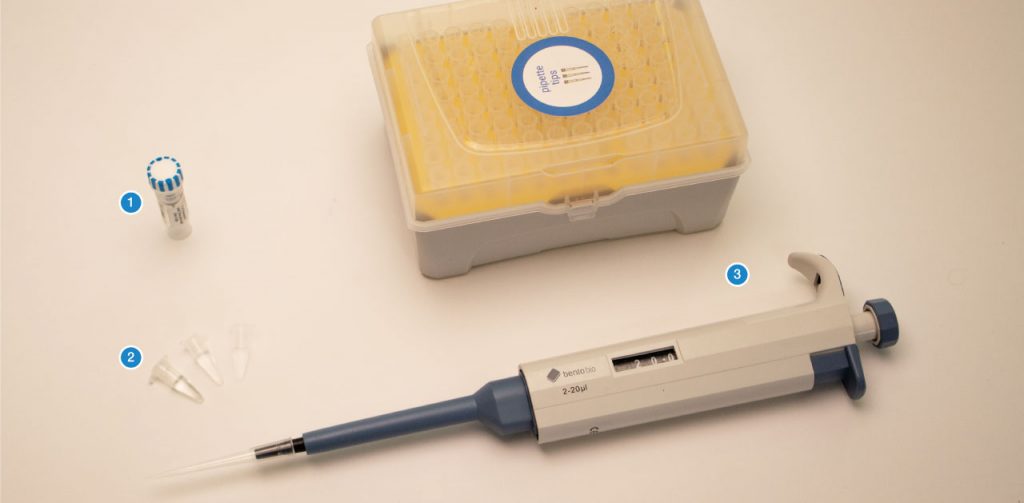In this protocol, you will cast a 1% agarose gel, load the gel with DNA samples and ladder, and separate them using gel electrophoresis. You will need to have your DNA samples prepared and ready to load into the gel.
1% refers to the percentage of agarose in the volume of liquid. The gel percentage is calculated as (grams of agarose / milliliters of buffer) x 100%. In this gel, we are mixing 0.5g with 50mL, so the calculation is 0.5g / 50 mL x 100%, which gives us a 1% gel.
The standard percentage of agarose for a gel is usually about 1-2%. The percentage of agarose that is appropriate depends on the size of DNA fragments you are expecting to separate. The percentage of agarose determines how well the DNA separates, and the resolution of the final gel.

To make a 1% gel, you will dissolve one agarose tablet (2) in the 0.5x TBE Buffer (3), which you diluted in the guide to getting started with electrophoresis. You can use the glass beaker (1) that comes with the Biotechnology 101 Kit.
Drop the agarose tablet into the beaker, then fill the beaker with 0.5x TBE Buffer to the 50 mL mark. Wait for the agarose to dissolve. This might take a few minutes. Swirl the partially dissolved tablet in the buffer occasionally.






